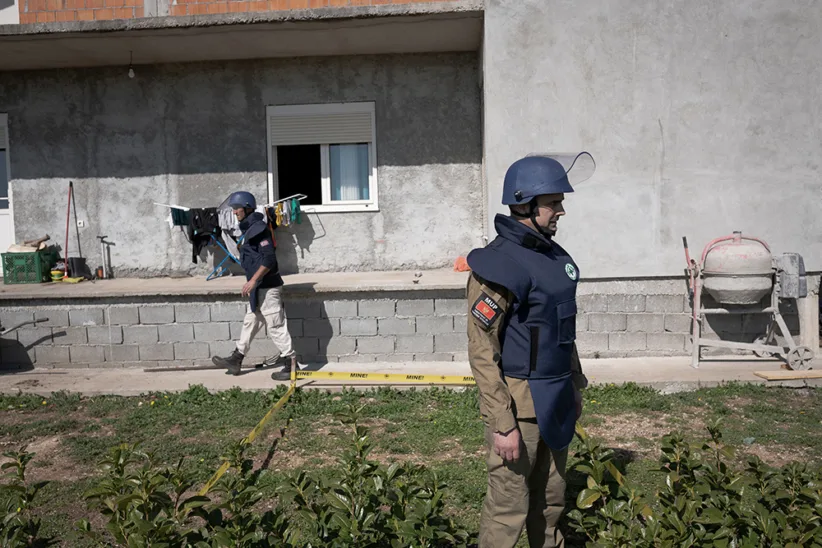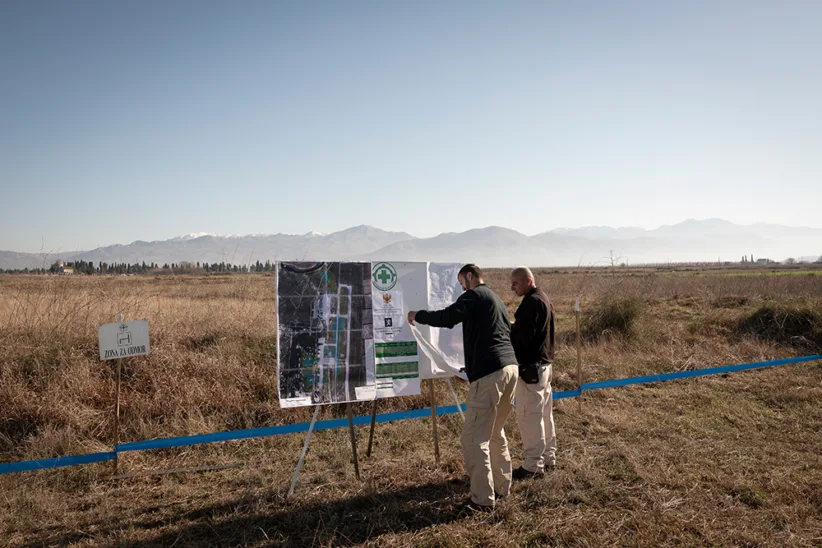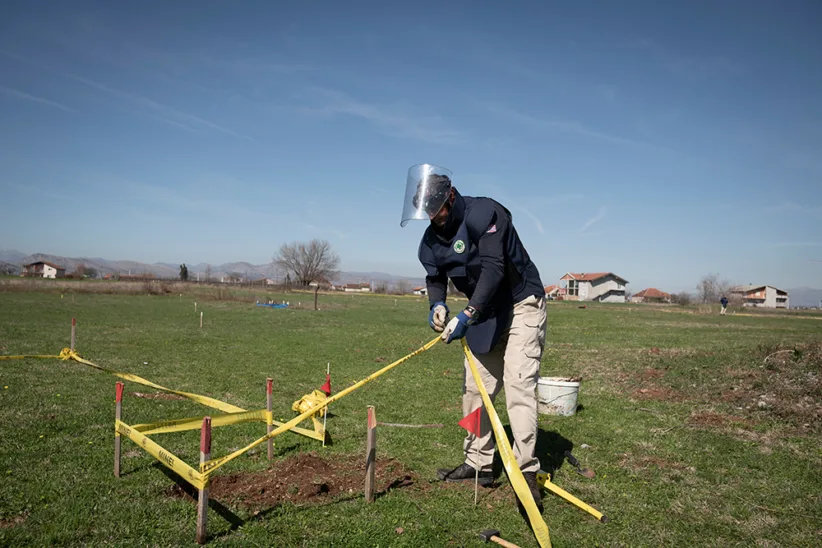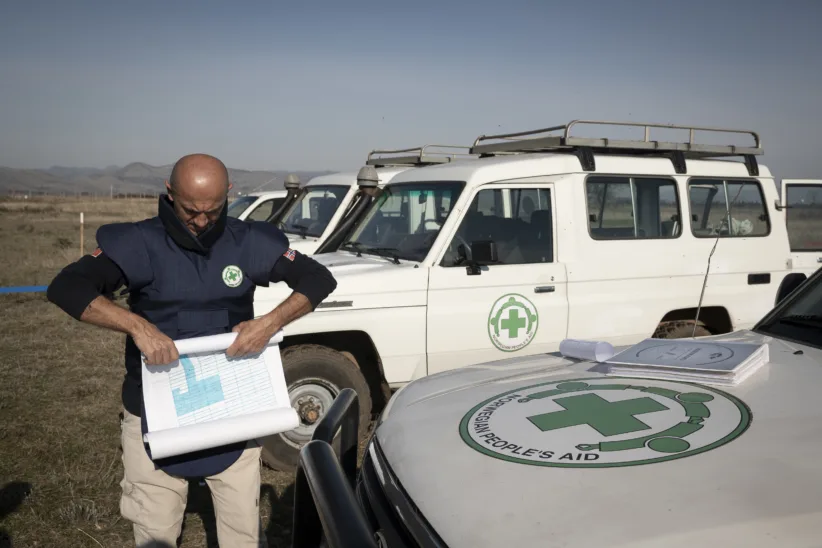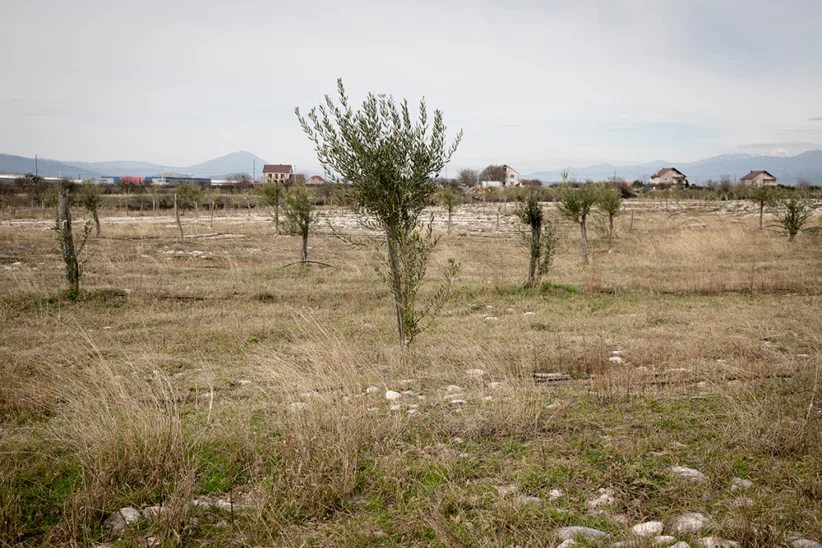10 August 2020 marked an important date in Montenegrin history. 10 years to the day after the Convention on Cluster Munitions entered into force, Montenegro could proudly declare itself free of these deadly weapons.
From 2018 to 2020, Norwegian People's Aid assisted Montenegro in achieving its obligations to get rid of cluster munition remnant (CMR) contamination within the Article 4 of the Cluster Munitions Convention deadline. These weapons have posed a danger to civilians living in Montenegro since the NATO bombing campaign in 1999.
NPA released a total of 1,850,900 m2 of land previously contaminated with CMR on ten locations in the municipalities of Rožaje, Golubovci and Tuzi. 88 CMRs were found, and as per national rules and regulations, safely destroyed by the Montenegrin Directorate for Emergency Response.
The land release was conducted in close cooperation with the Ministry of Interior (Mol) and the National Mine Action Centre (NMAC) with generous support from the Norwegian Ministry of Foreign Affairs. It has enabled access to land for agriculture, harvesting, and use of wood for the timber industry, including manufacturing. The clearance also enabled access to land for recreation and tourism, supporting the development plans of the country, further enabling wider and more sustainable positive impact for Montenegro.
NPA successfully completed our operations on 21 July 2020, reaching 100% of our commitments in order to reduce the risks from cluster munitions and other explosive weapons in populated areas to a level where civilians can live safely, and development is not constrained. Following this, Montenegro could proudly declare compliance with the CCM Article 4 on 1 August 2020.
A cluster bomb or cluster munition is a weapon containing multiple explosive sub-munitions. Cluster munitions are dropped from aircraft or fired from the ground and are designed to break open in midair, releasing the sub-munitions and saturating an area that can be the size of several football fields.
Anybody within that area, military or civilian, is very likely to be killed or injured. As many of the submunitions fail to work according to design, huge quantities are left on the ground and, like landmines, remain a fatal threat to anyone in the area long after a conflict ends.
NPA works with cluster munitions both on a policy and operations level. NPA was central in the effort that led to the ban, and we have taken a leading role in assisting countries in survey and clearance of CMR.
- The Cluster Munitions Convention (CCM), which was adopted in 2008 and entered into force on August 1st 2010, prohibits the use, production, transfer and storage of cluster munitions.
- The convention requires state parties to clear cluster munitions in their countries within ten years of the accession to the Convention and destroy stockpiles within eight years, as well as provide assistance to victims.
- 10 years on, 121 countries have joined the cluster munition ban.
In recent years, cluster munitions have unfortunately been used in conflicts in Nagorno-Karabakh, Ukraine, Syria and South Sudan. - 30 countries and territories are still contaminated with cluster munitions. New, effective survey and clearance methods mean that technically it would be possible to clear most of these countries within a few years.
- 35 countries have fulfilled their obligations to destroy their cluster munitions stockpiles. 99 percent of the stockpiles held by State Parties have been destroyed.

Funding
NPA's work in Montenegro has been funded by the Norwegian Ministry of Foreign Affairs.

